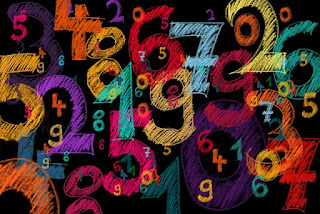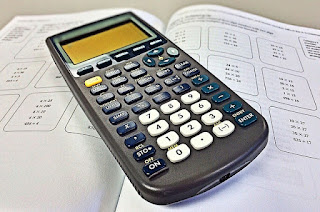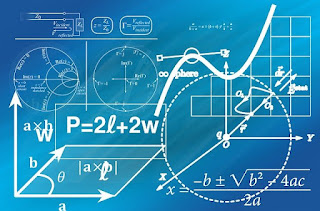What does factorization and a factor mean?
What does a math factor mean?
In mathematics, a factor is any number that, when divided by another number or numbers, produces a result that is a whole number and has no remainder. A factor is a number that equally divides another number, to put it another way. After division, there are no further numbers.
For instance, 5 and 2 are factors of 10 since 5 x 2 equals 10.
Any number may consist of several variables. Contrary to the majority of integers, square numbers have an odd number of elements.
For instance, the fact that 25 is the square of 5 makes it a square number. 1, 5, and 25 make up its factors.
Factors may be found in algebraic equations as well as in sums of numbers.
The opposite of expanding is factoring. Continue reading to learn more about expanding and factoring. To assist you in teaching about factors, there are also some teacher-made materials mentioned.
How to do factor calculations in math?
Using a factor tree is one of the simplest methods for kids to compute factors. Finding out which integers may be multiplied together to achieve a certain number can be done using a simple root-and-branch method.
Finding prime factors—numbers that can no longer be factored down—is the major goal of this approach. Given that they can only be divided by themselves and by one, prime factors must be prime numbers.
For instance, a factor tree for the number 24 might like this:
24
4 x 6
2 x 2 x 2 x 3
Because 2 and 3 are both prime integers, the final result of factorising the number 24 is 2 x 2 x 2 x 3.
The sum of a whole number's prime components may be used to represent any whole number other than 1.
paired factors
Why do factor pairs exist?
Factor pairs are combinations of two integers that, when multiplied together, produce a known result (or number) when acting as factors of a multiple.
Consider the number 20. The multiplication total of 10 x 2 is an illustration of a factor pair of 20.
10 x 2 = 20
The factor pair is 10 and 2, and the product of these two factors is 20.
The factors of 10 and 2 together are not the only factor pair that may be found for the multiple of 20, though. Another similar example would be the numbers 5 and 4, which, like the numbers 1 and 20, are a factor pair of the multiple of 20.
Why not have your kids match every pair of factor combinations for a given number to illustrate the idea?
many forms of factors
major factor
A prime number only contains two components: the prime number itself and the number 1. In contrast to most numbers, which have an even number of factors. It only contains one factor pair, according to this.
Accordingly, a prime factor is just a factor that also happens to be a prime integer.
It is thus a number higher than 1, but it can only be split precisely by itself or by 1.
53 Factor Pairs.
53 is the result of multiplying two factors together, therefore there are two factors in each factor pair. The 53 Positive Factor Pairs are listed below.
1 × 53 = 53
53 × 1 = 53
Negative values are included in factors of 53, as we said earlier. You can acquire all the Negative Element Pairs of 53 by simply adding a minus to each factor in the list of Positive Factor Pairs above. Minus times minus equals plus.
-1 × -53 = 53
53 Common Factor -53 -1
You will often discover that the factors of two or more integers overlap while calculating their factors. These overlapping integers are referred to as "common factors."
Using the numbers 18 and 24, for instance, common factors that will multiply into both are 1, 2, 3, and 6.
The most prevalent factor (HCF)
The biggest number of the common factors you have found is, as you may have guessed, the highest common factor in a total.
For instance, 24 and 6 have a greatest common factor of 6, which is 6. This is due to the fact that 6 enters 6 just once and exits 24 four times.
What are the 100-fold factors?
All the numbers that add up to 100 when multiplied by two are known as the factors of 100. The entire numbers that equal 100, whether they are positive or negative, are also known as factor pairs of 100.
A fraction or a decimal number cannot be a factor in a factor pair.
By starting with the numbers 1 and 100, we can then look for additional pairs of numbers that when multiplied together, add up to 100.
multiples of 100
1
2
4
5
10
20
25
50
100
What are the pairs of 100's factors?
Simply choose a pair and multiply the two numbers to obtain 100 to get the positive and negative factor pairs of 100. Here are a few instances:
100 positive factor pairs
1 × 100 Equals 100 ⇒ (1, 100)
2 × 50 = 100 ⇒ (2, 50)
4 × 25 = 100 ⇒ (4, 25)
5 × 20 = 100 ⇒ (5, 20)
10 X 10 = 100 ⇒ (10, 10)
100 negative factor pairs
-1 × -100 = 100 ⇒ (-1, -100)
-2 × -50 = 100 ⇒ (-2, -50)
-4 × -25 = 100 ⇒ (-4, -25)
-5 × -20 = 100 ⇒ (-5, -20)
-10 X -10 = 100 ⇒ (-10, -10)
100-fold factors through prime factorization
The method of representing a composite number as the product of its prime factors is known as prime factorisation. Prime factorization is accomplished in three fundamental steps:
Divide 100 by its lowest prime factor, 2, to obtain the prime factorization: 100 2 = 50.
Next, calculate the lowest prime factor of 50.
Continue doing this till the result is 1.



Comments
Post a Comment